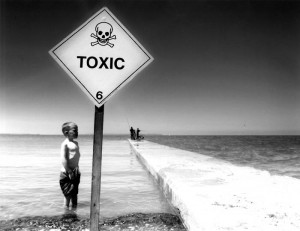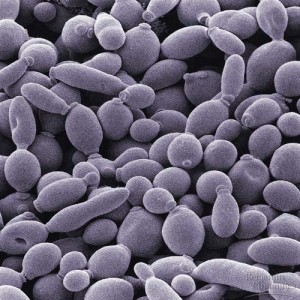What is your Personality? Part 1
 What is personality? It has many different definitions, but I think it is the way we interact with the outside world—our loved ones, friends, and strangers. It is what the people outside of you see. What factors define our personality? Generally, most of us would agree that it’s the combination of our genetics and environment. Either way, we tend to believe it is purely of psychological origin. In other words: mind over matter. I hope by the end of this writing, you will come to realize the other critically important neglected factor in defining our personality: nutrition.
What is personality? It has many different definitions, but I think it is the way we interact with the outside world—our loved ones, friends, and strangers. It is what the people outside of you see. What factors define our personality? Generally, most of us would agree that it’s the combination of our genetics and environment. Either way, we tend to believe it is purely of psychological origin. In other words: mind over matter. I hope by the end of this writing, you will come to realize the other critically important neglected factor in defining our personality: nutrition.
When I first entered alternative medicine, understanding the relationship between nutrition and personality was the last thing on my mind. I was mainly concerned with grappling with physical ailments using natural remedies. But, as my reading continued, the evidence became not only plausible—but certain that there was indeed a strong relationship between your nutrition and personality. Initially I asked myself, “How many people know about this?” to later, “People should really know about this.”
Before one can fully grasp what I’m about to say, let’s first explore the chemistry of our body. Every second that we are alive, our cells are working. Thousands of reactions are taking place, allowing us to function the way we do when we go about our daily lives. These include hormones, neurotransmitters, and other signals our body produces. Do these have an effect on our personality? If they didn’t, psychiatrists would never prescribe medications. Medications can manipulate your chemistry, so you “feel” better. Suddenly, a person can go from feeling depressed and even suicidal, to feeling cheerful and optimistic about life on an antidepressant. A hyper, rambunctious child can become calm and docile when they’re on an ADHD medication. The shy, quiet person can become life of the party after a couple shots of alcohol. Why is this so? Because anything that can manipulate your chemistry, will affect your personality.
But what does this have to do with nutrition? Can nutrition “manipulate” our chemistry to affect our personality? Let’s look at some examples in studies:
-
Incarcerated juveniles put on a sugar-restricted diet had a reduction in antisocial behavior, disruptive behavior, and assaults compared to non-restricted juveniles.
-
In bipolar patients, people hospitalized for mania had a higher blood marker for food sensitivity to gluten than non bipolar patients.
-
People who had lower blood levels of omega-3 were more likely to report depression, impulsiveness, and a more negative outlook on life.
-
Substance abuse patients who supplemented with omega-3 showed a reduction in anger after 3 months.
-
People with extremely low vitamin D levels had an increased risk of depression
-
In ADHD children, supplementing with magnesium and vitamin B6 reduced hyperactivity after 2 months
This only scratches the surface of the staggering relationship between nutrition and our personality. In Part 2, I will examine this relationship deeper, as well as its relevance to toxic metals, and on how you can personally benefit from this knowledge in helping yourself become the person that you always wanted to be.
The Silent Creature Disrupting your Health
According to Rice University, 70 % of people have this. It is the epidemic sweeping our nation that you never hear about. It is Yeast, aka: Candida. So where does it usually come up?
1. Vaginal infections
2. Toenail Fungus
3. Athlete’s Foot
These are probably the 3 most common conditions we think of when it comes to yeast. But in fact, you’re lucky to have anyone of those. Why? Because that immediately says you have yeast. In a lot of us, yeast will be thriving within us, without us ever really knowing. We may suffer from chronic headaches, PMS, weight gain, seasonal allergies, heartburn, and even fibromyalgia—never knowing its connection to Candida.
So what is Candida exactly? It is a normal resident of our intestines, but we are referring to the Candida as the opportunistic pathogen that thrives under “favorable” conditions which include:
-
The use of birth control pills
-
Regular consumption of rice, bread, or pasta
-
Regular consumption of sweets or fruit
-
Regular consumption of alcohol
-
Stressful life events
-
Hormonal imbalances
-
Having Mercury Amalgams
Candida produces over 70 toxins in the body, and along with disrupting the immune system (70 % of the immune system is in the gut), it interferes with estrogen, progesterone, and other hormones in the body. Since it wants to survive, it will trick the person into craving for sweets —when it’s really the yeast that wants to feed. Candida’s role is mainly as a janitor of the body—it thrives under “dirty” conditions of the body that helps to break down rotting or putrefying food. When the body’s terrain is “clean,” the yeast’s services will no longer be required, and will go away. What about taking an antibiotic and getting rid of the yeast?
In certain rare acute situations that might be warranted, but in general, most people have chronic yeast infection. Meaning, they may experience relief from the antibiotic, but the problem remains—the terrain is dirty because of their lifestyle. So the yeast will often come back as the same symptom, or in a different symptom or disease. Also, when you “kill” yeast, who do you think has to clean up its remains? Your body. This puts tremendous stress especially on your liver to detoxify the dying yeast, and your bowels to excrete it out.
If it’s such a big deal, then why don’t most doctors know about it? Unfortunately, most physicians only put weight on something if it can be measured.” The next time you go for your physical, you can request to have your blood tested for Candida Immune Complexes Test. However, in my experience, most people have it whether it shows up or not. If you’re really interested to know if yeast IS a problem for you, then do this free yeast questionnaire. The results can give you an idea on how MUCH Candida is a problem for you CURRENTLY.
The benefit of the Hair Mineral Analysis is it can give you a road map on how to balance your body’s chemistry. Then naturally, over time, your yeast will go away.
A Self-Guide to Treating Headaches
Headaches can be a difficult ailment to remedy. This is because so many different causes can be at play. Rarely, only a single factor is the culprit. Based on my experience, here are the steps to take:
1. Do you get headaches less than 3 times/week? Then you can use the following acute remedies:
–Dr. Schulze’s Deep Tissue Ointment: It’s the combination and potency of the herbs that makes this formula good. You can apply it on your temples, behind your ears, and on your forehead when a headache strikes. Just be careful because it has cayenne and it emits strong vapors. Keep it away from your eyes. Generally speaking, if you get acute headache relief from medications like ibuprofen, Motrin, or Excedrin, this may be a good remedy for you. If it doesn’t work, it’s still a good thing to use for muscles pains, sprains, and other bodily pains.
–Doterra PastTense: This is a roll-on of a blend of essential oils. You can roll it across the back of your neck, your temples, behind your ears, and a light swab across your forehead (too much, and it may cause a burning sensation). Similarly, if you get relief specifically from medications like ibuprofen, Motrin, or Excedrin, then this may be a good remedy for you.
–Copper 3 mg: Take half a tablet when you get a headache. Hidden copper toxicity is a cause of a lot of headaches, and this ironically helps by increasing the synthesis of ceruloplasmin in your body, which helps to bind and excrete copper from the body. In some cases, it’s strong enough to alleviate an acute headache. It might be particularly useful in women who suffer from headaches during their menses. You can take 1/2 tablet up to three times a day. However, more often, getting rid of copper toxicity is a long process, which is best done through a nutritional balancing program based on Hair Mineral Analysis.
–P5P: This antagonizes and helps to excrete copper from the body. It might be particularly useful in women who suffer from PMS headaches (7-10 days before their menses). You can safely take this up to 3 times a day for 1 week. The only side effect to look for is increased heart palpitations. In that case, it might not be the best option for you.
–Flush-Free Niacin 250 mg: It’s important that you get the flush-free niacin, so you won’t get the unpleasant red flushing. Whenever you get a headache, immediately take 1 tablet. This also helps to lower copper.
2. Do you get headaches 3 times/week or more? In that case, you suffer from chronic headaches. Then you can use the following remedies:
–Nexrutine 250 mg: Take 1 tablet three times a day with food. This will ONLY be a good option if your headache specifically gets better with medications like Motrin, ibuprofen, and Excedrin. After 2 weeks, you should get an idea if it helps or not.
–5-LOXIN 75 mg: Take 2 tablets twice a day with food. This will be a good option if you don’t get relief with medications like Motrin, ibuprofen, or Excedrin. After 2 weeks, you should get an idea if it works or not. Then you can reduce it to 2 tablets once a day. More appropriately, if you have gotten headache relief from medications like prednisone or antihistamines, then this would especially be something to try. This means that there could be an allergic and/or adrenal component to your headaches. Again, this is very complex, Which of course, is best to handle through a Nutritional Balancing Program based upon Hair Mineral Analysis.
3. What if none of these remedies work, or produce limited relief? Then the following are most likely culprits:
-Bowel Toxicity: This can be due to constipation (meaning, not having the same number of bowel movements as meals/day), poor digestion, parasites, or toxins from yeast overgrowth. According to Rice University, 70% of people today have systemic Candida. Additionally, Hair Mineral Analysis can help detect some of these factors. In the meantime, Coffee Enemas may provide acute relief in some cases.
-Diet: A Nutritional Balancing Program based upon Hair Mineral Analysis, can tell you what diet is best for you. In addition, avoid wheat because it is inflammatory. Also, if you eat eggplants, tomatoes, potatoes, or peppers at least three times/week, then that may be a culprit. Those are part of the Nightshade Family of vegetables, which are notorious for increasing inflammation in sensitive individuals.
-TMJ: Temporomandibular Joint Disorder is actually another common cause of headaches. These people tend to grind their teeth at night, and/or have a misaligned bite.
-Dental Amalgams: Silver dental amalgams contain 50% percent mercury. In some susceptible individuals, they can be a cause of chronic headaches. In most cases, unless they are removed, a person’s headaches are more difficult to fully cure.
-Hidden Copper Toxicity: Although copper symptoms can be mitigated by copper, niacin, or P5P, they are not the correct way for long-term use. A Nutritional Balancing Program based upon Hair Mineral Analysis would be the way to go. Coffee enemas may provide acute relief in some cases.
-Dehydration: One is not fully hydrated unless they are drinking at least 8 glasses of spring water everyday. Even slight dehydration can provoke headaches in some sensitive individuals.
4. Summary
Every disease or condition is never consisted of only one cause. It is always multifaceted or holistic. Many of these facets can be detected in Hair Mineral Analysis. However, in a headache sufferer who is just looking for some relief to get their head above water, then these above recommendations may be beneficial.
What to keep in mind with these recommendations? They don’t balance the body in the long-run, but are natural remedies that can be tested. Also, for the oral supplements, be sure to take them with a full or near full stomach, in those who have sensitive stomachs.
*None of these recommendations have been evaluated by the FDA. They are not intended to prevent or treat disease.
The Missing Piece to a Good Diet: Part 2
My Part 2 article on “The Missing Piece to a Good Diet.” Click here to read.
The Missing Piece to a Good Diet: Part 1
The 1st article about “The Missing Piece to a Good Diet” published on the Arlington Examiner. Click here to read.
Are Toxic Metals Inside of You?
 Dr. Max Gerson had summarized that the underlying cause of all disease is two things: toxicity and deficiency.
Dr. Max Gerson had summarized that the underlying cause of all disease is two things: toxicity and deficiency.
Now, without referring to a health textbook, or even having a background in biology, does that statement make sense to you? Does it speak to your commonsense or intuitiveness about the right nature of things?
Throughout ancient times, philosophers and great thinkers alike have valued the concept of balance. Aristotle had talked about the Golden Mean, where virtue is found between the extremes of excess and deficiency. Confucius talked about the Doctrine of the Mean, which represented moderation and objectivity as a guiding principle to life. Buddha spoke of the Middle Way, which is living between the extremes of self-indulgence and self-mortification to lead to Nirvana.
Our physical health works the same way. We are already in touch with this concept–if we sleep too little we might get a headache. If we eat too much in one sitting, we feel nauseous. But you have to look even deeper…
Billions of cells are working in your body right now, working in harmony. But are they really? How do you know? Because you feel ok?
Like the straw breaking the camel’s back, our physical health works the same way. Disease, illness, or malaise doesn’t happen overnight. Today, we live in an unprecedented time of toxicity. Mercury, lead, cadmium, aluminum, arsenic, and nickel are all present in our cells today.
And although their amounts are miniscule, in the sophisticated biological harmony that our body tries to sustain, they are nails on the road. They can puncture, and wreak havoc on our wheels.
For example: magnesium is needed for over 300 chemical reactions in our body. That’s why it’s related to so many things such as blood pressure, mood, bone health, and blood sugar. If magnesium is even slightly deficient, our body will snatch toxic metals to take its place reducing the reaction to as low as 10% of its normal rate.
Do you wish you felt less anxious, more energetic, less depressed, or less overweight? Your toxic metals could be in the way.
Vitality and Health
Many of us know that vitality means “energy.” When it’s low, we feel tired or down. When it’s high, we feel good or optimistic.
But do you know the source of your energy? The source of what makes you feel more alive?
Many of us cannot feel the difference between stimulation and real energy. Not surprisingly, many of the pleasures we pursue such as sex, exercise, food, music, alcohol, and drugs are methods we use to enliven us.
Is there a way to tell whether the pleasure we engage in provides us with stimulation or real energy?
Inherently, ‘pleasures’ such as drugs and alcohol are harmful due to the plethora of negative effects it has on our body. In addition, they’re often sought after with an impulsive quality or desire because of the lift it can bring.
Other ‘pleasures’ such as sex, exercise, music, and food often go under the radar because they aren’t inherently harmful to the body. But they can be equally detrimental to our health based on:
1. The degree in which we engage in the pleasure
2. The quality in which we engage in the pleasure
And both of those factors are directly affected by how strongly we pursue the activity whether consciously or subconsciously to relieve our anxiety, panic attacks, depression, or other negative states of mind. In other words, we do it to stimulate us into a “better” state of well-being.
My point being, just because you’re not on an antidepressant doesn’t mean you’re not depressed. And by depressed I mean, your body’s inherent vitality or real energy can still be working at a suboptimal rate. What are some signs of this?
“I need to exercise in the morning to wake myself up”
“If I don’t have my morning coffee, I’m a zombie.”
“I’m soo tired in the afternoon.”
“All I need is 6 hrs of sleep, then I’ll be okay.”
“I’m not an alcoholic, but if I don’t drink for awhile, I feel down.”
“If I don’t exercise every other day, I feel down.”
“Loud music gets me going in the morning.”
“If I don’t eat chocolate or candy for awhile, I feel down.”
So what constitutes ‘real energy‘ then? Strong Adrenals + Strong Thyroid. This provides the person a constant healthy state of natural euphoria through hormones such as cortisol. Then, one is less likely to impulsively go after ‘pleasures’ to feel better. Rather, more effortlessly their pleasurable pursuits are done at the cost of moderation for the benefit of healthier enjoyment.
Why do I have Headaches? Part 2
My second article on Headaches published on the Arlington Examiner. Click here to read.
The Suspicion about Alternative Medicine
 Alternative Medicine, Holistic Medicine, Natural Medicine, etc. These are terms used interchangeably when talking about Non-Conventional Therapies.
Alternative Medicine, Holistic Medicine, Natural Medicine, etc. These are terms used interchangeably when talking about Non-Conventional Therapies.
I strongly dislike these labels. They don’t point to any deeper insight or meaning. Unfortunately, that is the sad state of alternative therapies today. Because they automatically go against the status quo of conventional therapies, they are given a label and left in the corner fending for themselves. They are often accused of being “unscientific,” and are put to trial to prove their legitimacy.
But how many of us actually take the time to read the history of medicine, and human history? Most of us wait for things to be widely accepted, before embracing it wholeheartedly. Others, are more daring, and take knowledge into their own hands, moving at the pace of their own inquisitive mind rather than at the the speed of the masses.
Thankfully, regarding alternative medicine, we don’t have to work too hard. Like an archaeologist, we merely have to dig up the artifacts buried deep within the health literature possessing the timeless secrets of health that has been lost to mainstream medicine for the past 100 years. In the early 1900’s, the United States was the booming natural health center of the world. Or more correctly, just the health center of the world. The division between conventional medicine and non conventional medicine wasn’t made until the uprising of pharmaceuticals. Today, we have traded our books in physiology, nutrition, and biochemistry, for prescription pads.
In other words, we have our swapped our critical thinking for the easier “magic bullets” of drugs. We have become so fascinated with the crutches of what we call pharmaceuticals, we have forgotten how to walk. We have forgotten that we have legs—that our body has an innate ability to heal more powerful than the strongest drugs on earth.
As Dr. Bernard Jensen had mentioned, when Penicillin was first discovered in 1928, this was hailed as the crowning achievement of modern medicine. We foolishly thought that what we created in chemistry labs could replace the time-honored principles of proper diet and good bowel care. And we have paid a price for this:
-
The United States is the most drug-dependent nation in the world
-
1 in 4 Americans have Pre-Diabetes
-
1 in 3 American are obese
-
Conventional Medicine is between the 1st and third leading cause of death in America
At the same time, the WHO organization has announced that 80% of all chronic disease is preventable through lifestyle modifications, including nutrition. How ironic.
And to think, some of the biggest geniuses ever in science were alternative medicine minded:
-
Dr. Emanuel Revici (1896-1998), one of the most brilliant physicians who’s ever walked on earth. Known for curing cases of Cancer and HIV. Albert Einstein had referred to him as “the greatest mind he’d ever come across in his lifetime.” He is never mentioned in any medical textbook.
-
Dr. Linus Pauling (1901-1994), a great chemist who won 2 Nobel Prizes in Peace and Chemistry. Not knowingly today, we take Vitamin C when we’re sick because of him. Also, he coined the concept of Orthomolecular Medicine: individualized nutrition to a person’s biochemistry. This is never mentioned in any conventional nutrition textbook.
-
Dr. Max Gerson (1881-1958), another great physician who was known as the first person to cure skin tuberculosis. Cured Nobel Prize winner Dr. Albert Schweitzer’s diabetes, as well as his wife’s tuberculosis. Famous for successfully treating hundreds of cancer patients. He is never mentioned in any medical curriculum.
-
And many others

